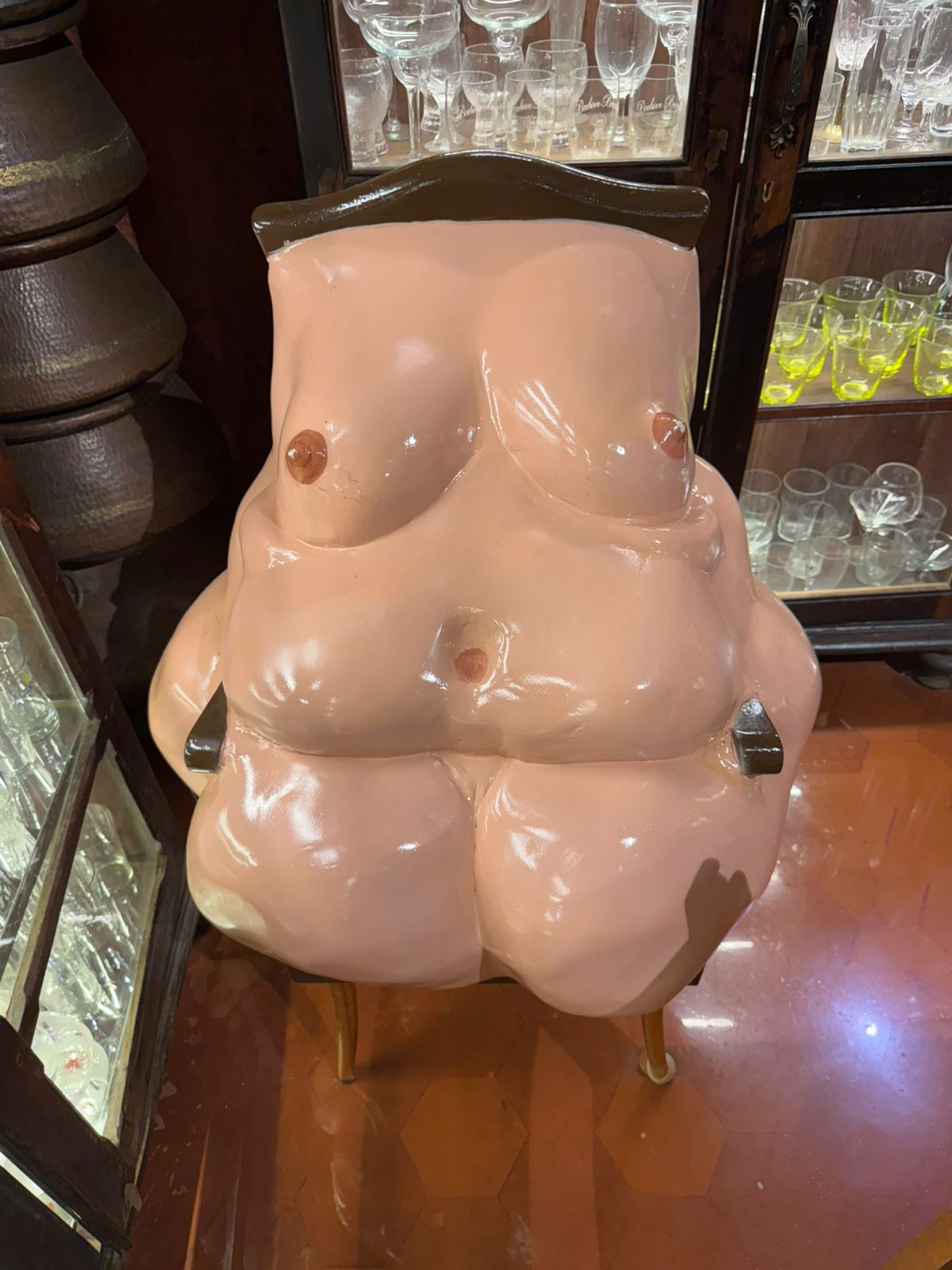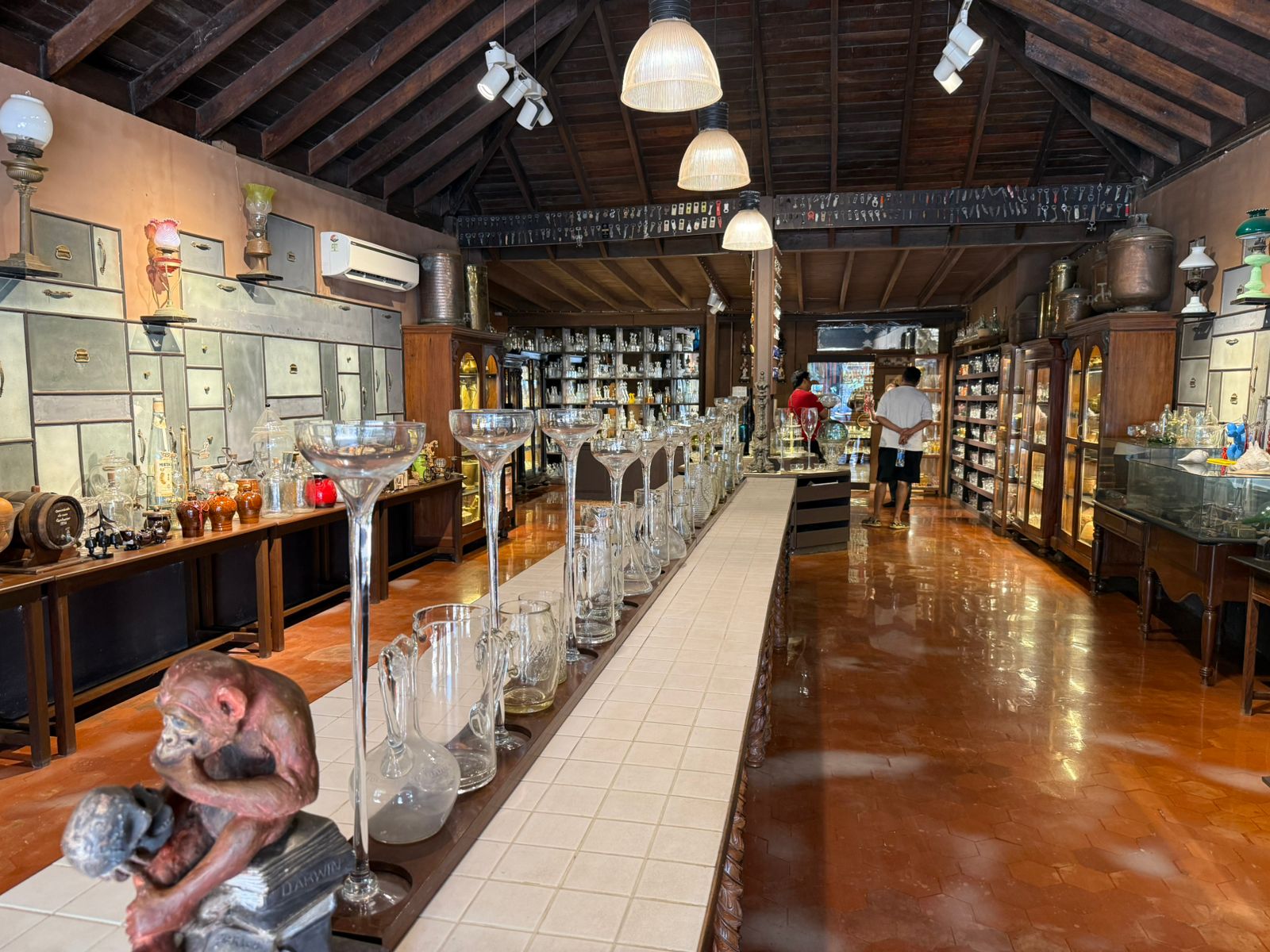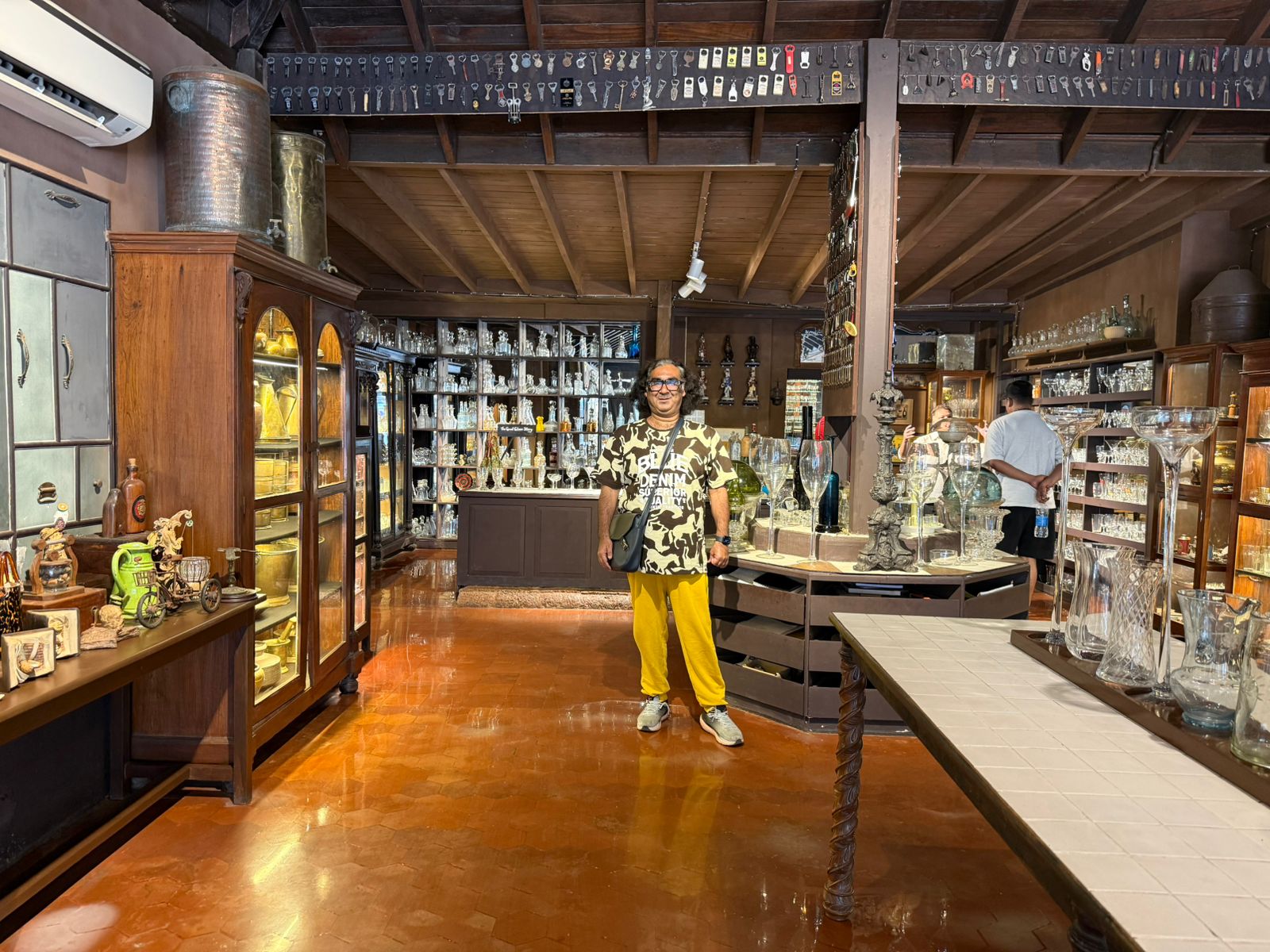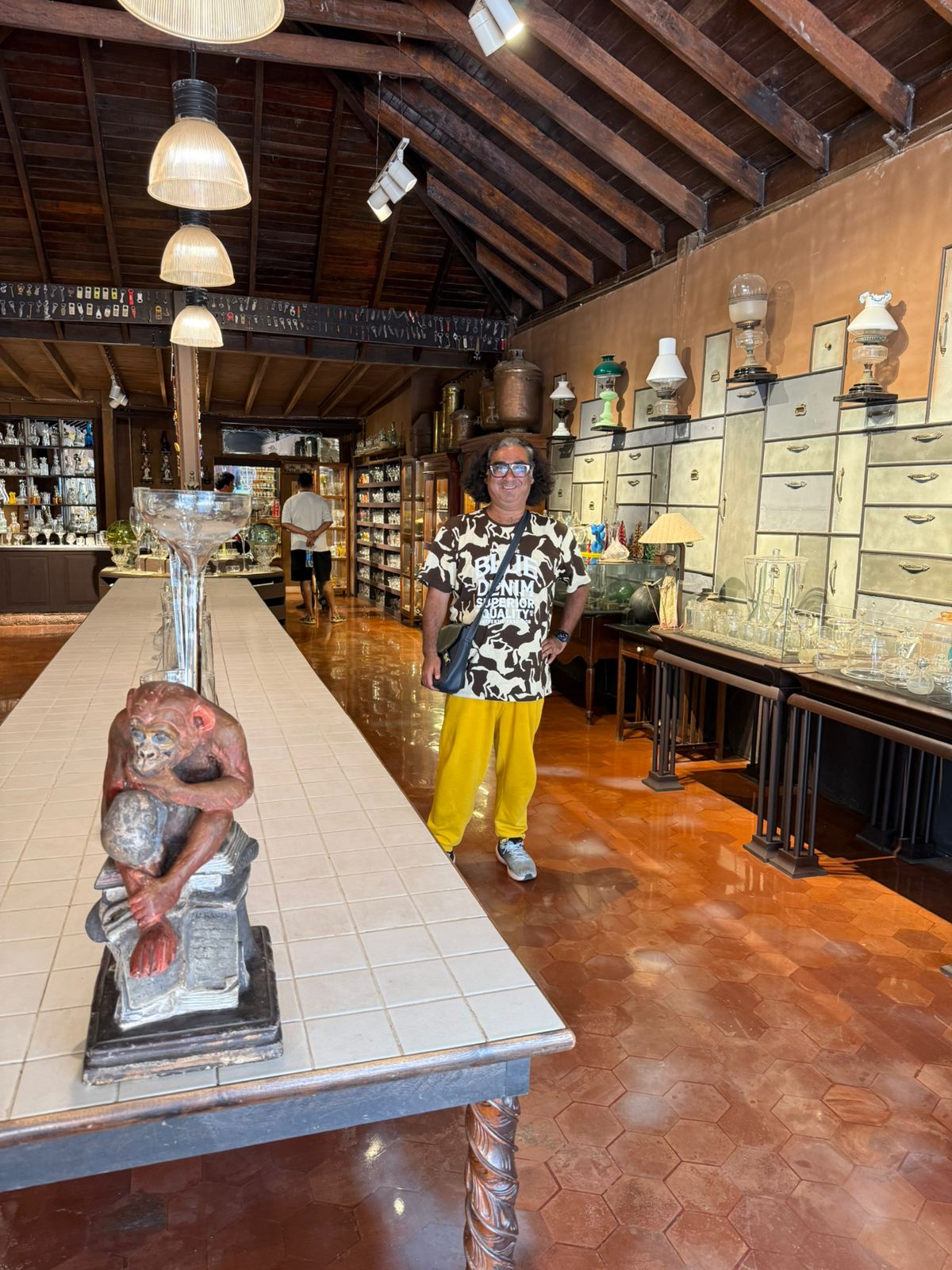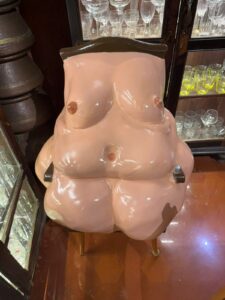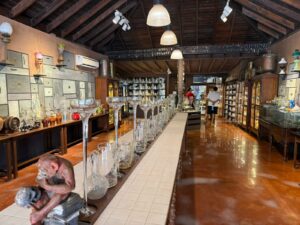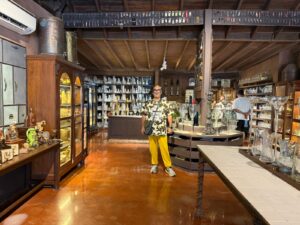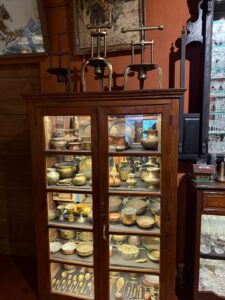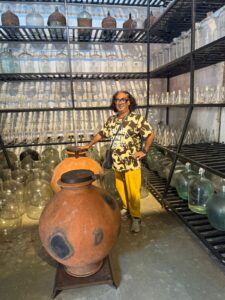All About Alcohol is an alcohol museum started by businessman Nandan Cochakar in the Candolim Beach area of Goa. This was a fascinating museum that I was excited to showcase in my blog.
As I walked in, I was greeted by a short, fair man who instantly inquired about the purpose of my visit.
“I am a blogger, and I wish to cover your outlet,” I told him.
I then showed him my blog, and the assistant was impressed. He even waived the entry fee of Rs. 500 and took me around the museum.
The Museum
The museum has four large rooms, and the entrance is filled with uniquely shaped alcohol glasses from all over the world. These items are displayed in glass caskets for easy viewing. There are also cabinets full of crystal whiskey tumblers. The ceiling of the museum features a wooden panel.
As you exit from the front side of the museum, there is a huge bar filled with crystal glasses. The wooden ceiling panel displays hundreds of beer bottle openers and wine coasters.
The wooden bar also has lanterns hanging from the top, which are very old and hold antique value.
One room is dedicated to wine caskets, straw baskets, and wrought iron pans—all used for storing barley and other grains essential for making whiskey and scotch.
One wall of the museum is lined with miniature liquor bottles from around the world. In addition to glasses, there are wall paintings and posters depicting wine bottles and bar scenes.
My favorite exhibit was a pink sculpture resembling the stomach and breasts of a very fat woman. It was really funny—it looked like a pink log—but I managed to take a picture of it and loved it for its unique shape.
The Fun Part
Visitors enter the museum from one side, but after exploring all the rooms and admiring the glasses and colorful bottles, they exit through a liquor store selling alcohol from around the world.
I noticed a wide variety of popular Indian whiskey brands, including McDowell’s, Signature, Royal Stag, and Blenders Pride. There were also wooden glass cabinets displaying premium brands like Talisker, Laphroaig, Toki, and Akashi.
It was obvious that once visitors exited the museum, they would be tempted to make a purchase. I really liked this strategy—guests could enjoy the museum and then buy the alcohol on display. This way, the owner makes money from liquor sales, and the museum serves as a facilitator for the final sale.
I asked if I could buy some of the antique paintings and ancient whiskey tumblers, but I was told they were not for sale. However, I managed to take some lovely pictures, which was the most fun part of the visit!
Let me know if you’d like any further refinements!

